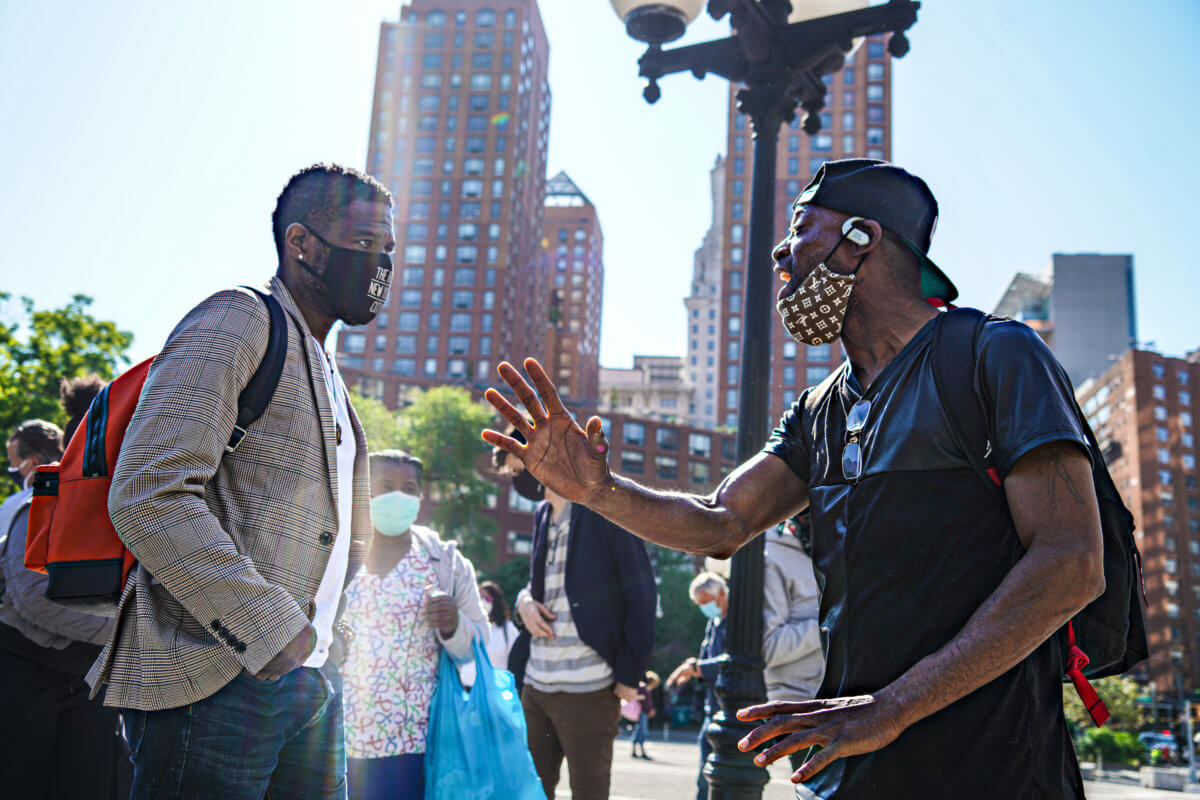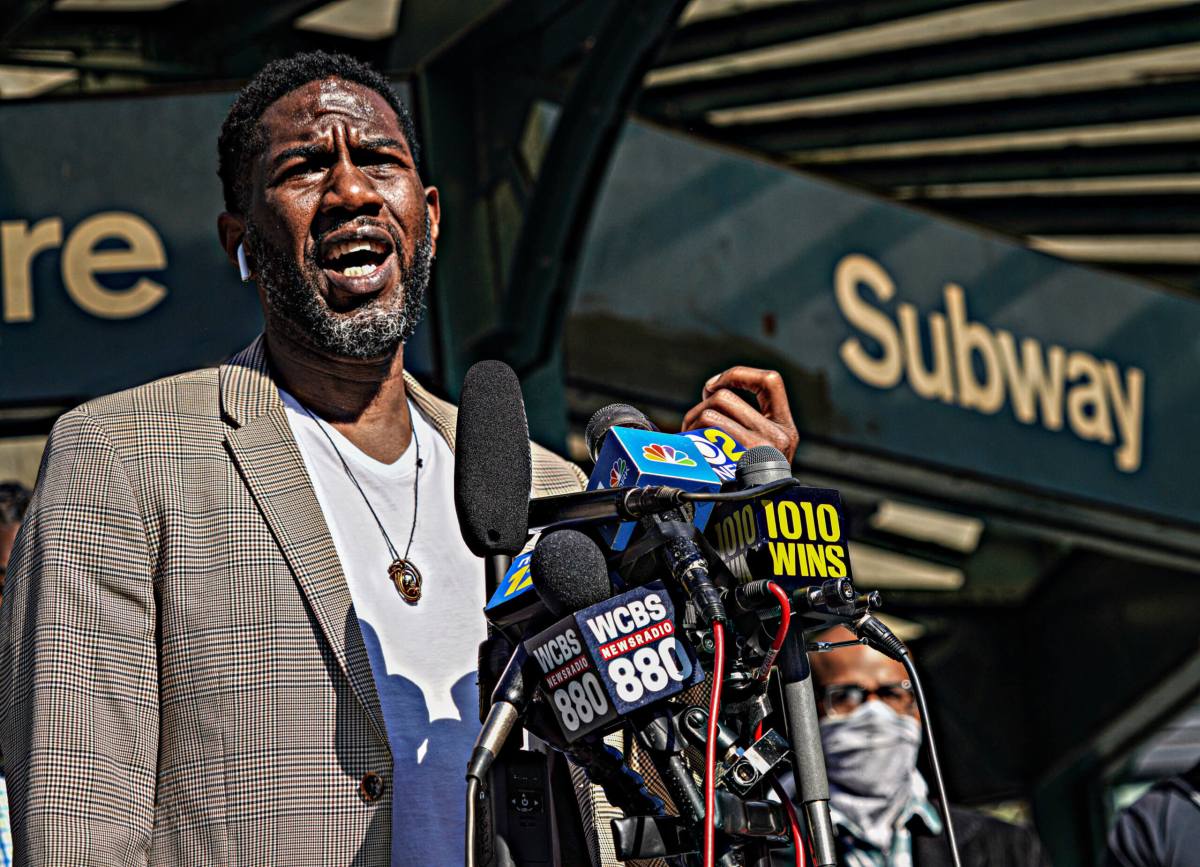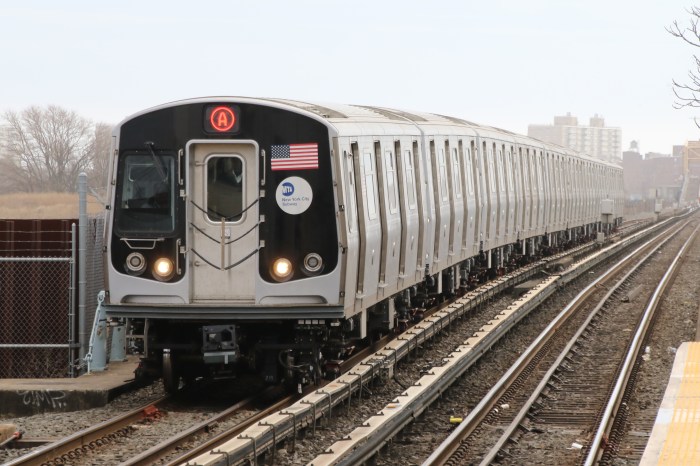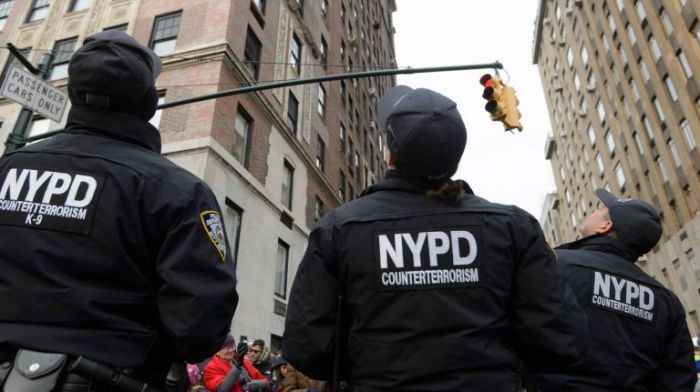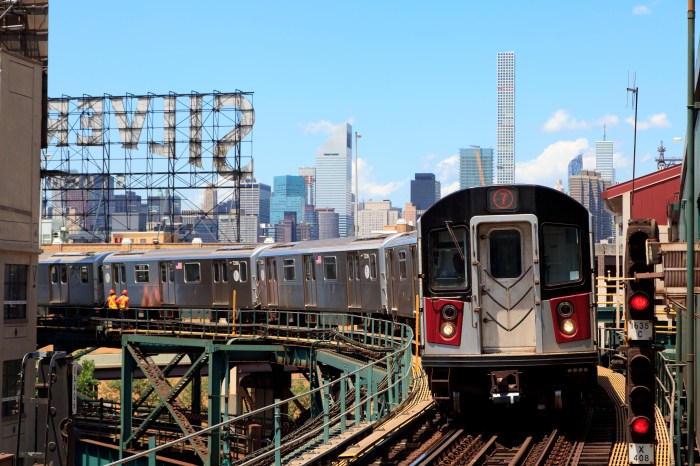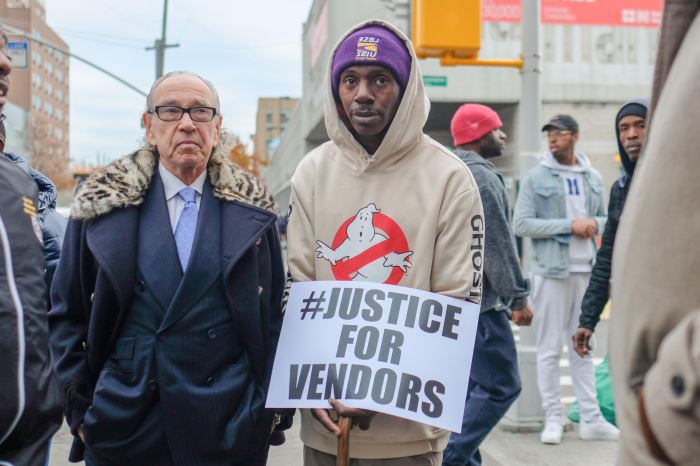Public Advocate Jumaane Williams told city and state leaders on Monday morning that it’s time to fix another 24-hour problem in the subway system.
With around-the-clock MTA service having resumed after halting due to COVID-19 cleaning precautions, the contentious debate over subway safety is taking over the Big Apple. Many are calling for a greater uniformed NYPD presence both upon subway platforms and riding inside train carriages alongside commuters.
On Monday, Mayor Bill de Blasio approved of an additional supplement of 250 officers to patrol subways. However, there are those who believe more police within the mass transit system will not equate to safer rides, including some train conductors themselves.
Williams led a conference outside of the subway entrance near the corner of 14th Street and Union Square on May 17 with fellow elected officials, activists, and MTA workers seeking solutions to boost security while toning down rhetoric that the system has safety problems.
Williams began by citing the recent slew of violent incidents, muggings, and slashings taking place underground. While the Public Advocate held steadfast to the importance of not shying away from the fact these issues did indeed happen and are a prevalent problem, he also critiqued some individual organizations — without specifications — for using the bloodshed to sow the seeds of mistrust and spread fear during a time when he says it important riders return to the trains.
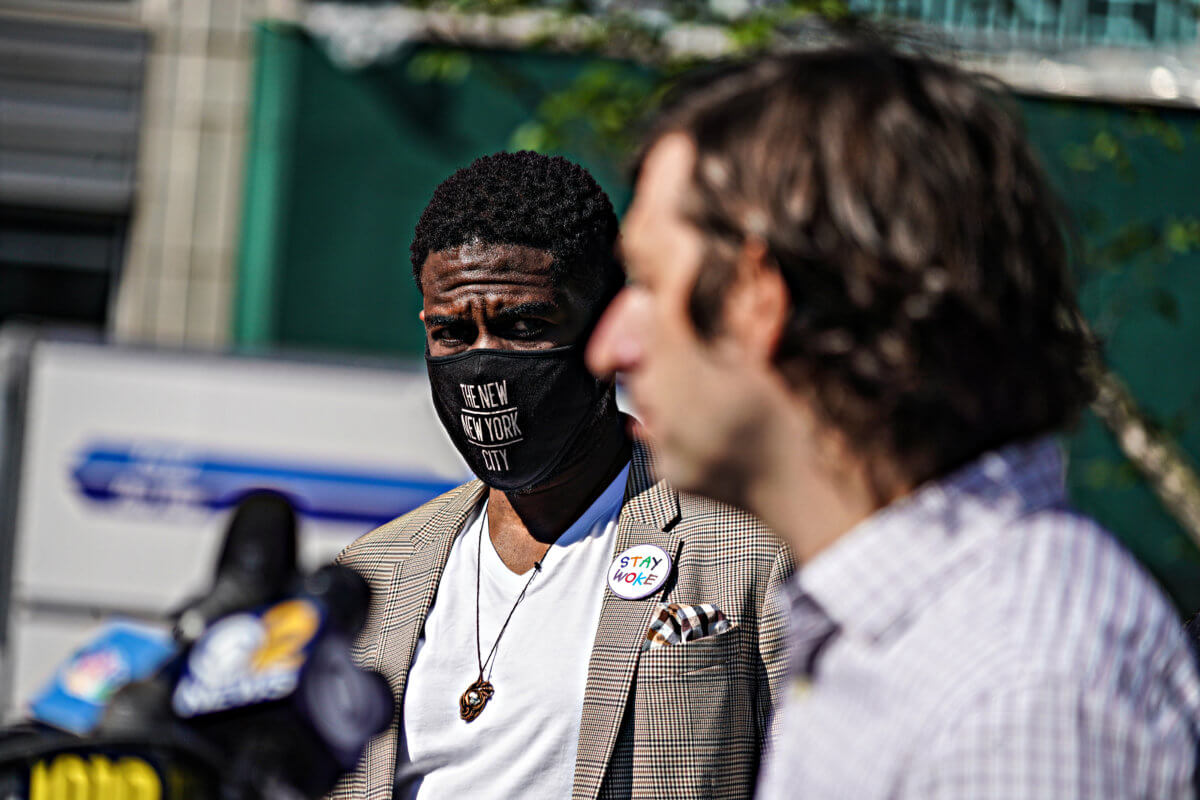
“Nobody wants to defund public safety, and let’s stop using that as an excuse not to do the right thing,” Williams said. “We know for a fact for simply sending additional police officers does not equate to safer subway or a safer subway system. What we should be having is a conversation about what the problem actually is and how we actually address the problem. There already are a lot of police officers in the subway system, there should be a conversation of what are we doing with those resources already there.”
The public advocate referred to homelessness and mental issues as being significant concerns that he thinks the NYPD cannot combat on a preventative level. He argued that social outreach programs could make a more significant difference in tackling these issues if the city provided as much resources to them as it does to the NYPD.
Williams agreed that one crime victim is one too many — but he also stated that the conversation of safety must be placed in context and law enforcement must not be used as an umbrella from which to cover all issues. He also called out numerous mayoral candidates, urging them to “stop providing lazy leadership” when it comes to subway safety.
John Ferretti, a train conductor agrees. Ferretti was attacked by an emotionally disturbed individual before the pandemic.
As the subway worker attempted to remove the man from between the subway cars for his own safety, Ferretti says he was shocked by the attack, but thankful that riders stepped in and deescalated the situation.
In an emotional speech, Ferretti says it was working-class New Yorkers who saved him, not the NYPD.
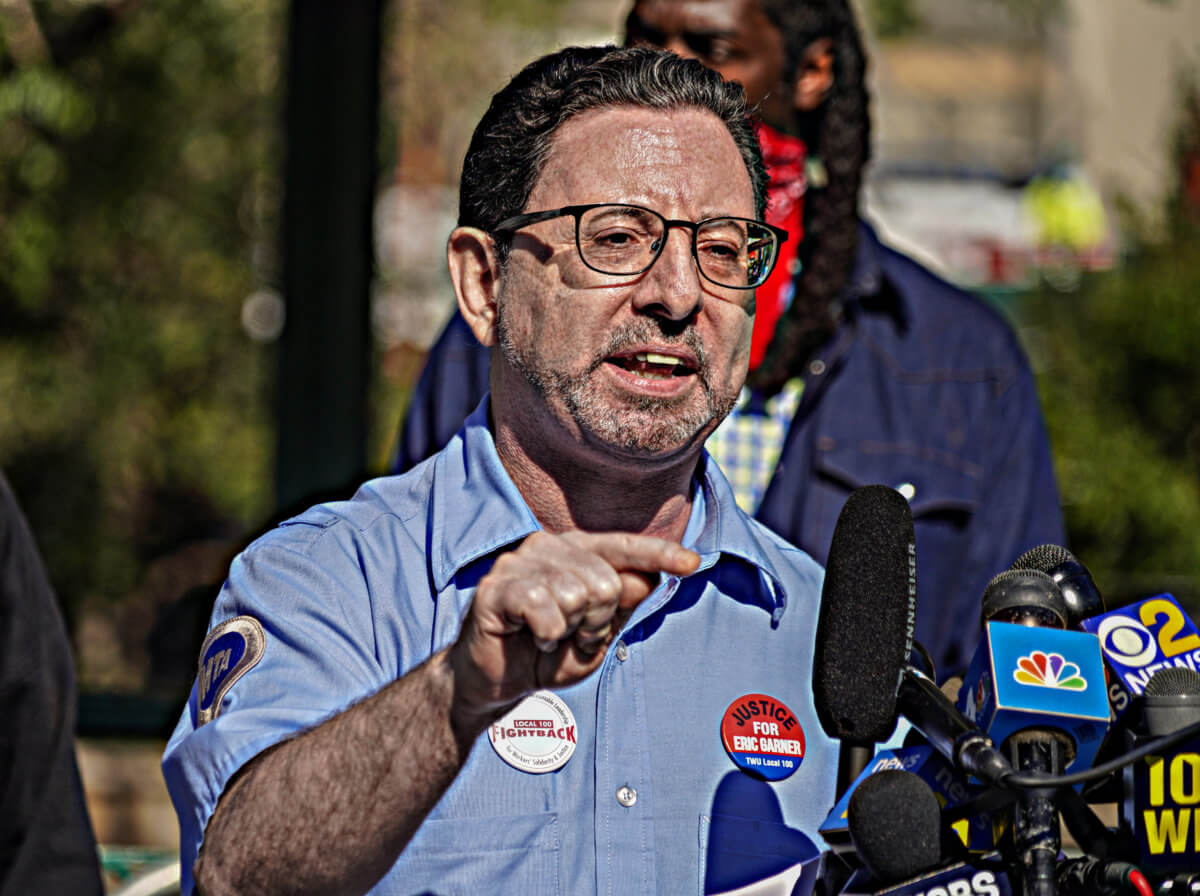
“The cops showed up 45 minutes later after the train was taken out of service and everyone is inconvenienced and they tell me I was not assaulted, I was harassed. How do the police officers know? They only go by what they see. This was the response in good times, before COVID,” Ferretti said. “Sending more police is like sending an arsonist to put out a fire.”
